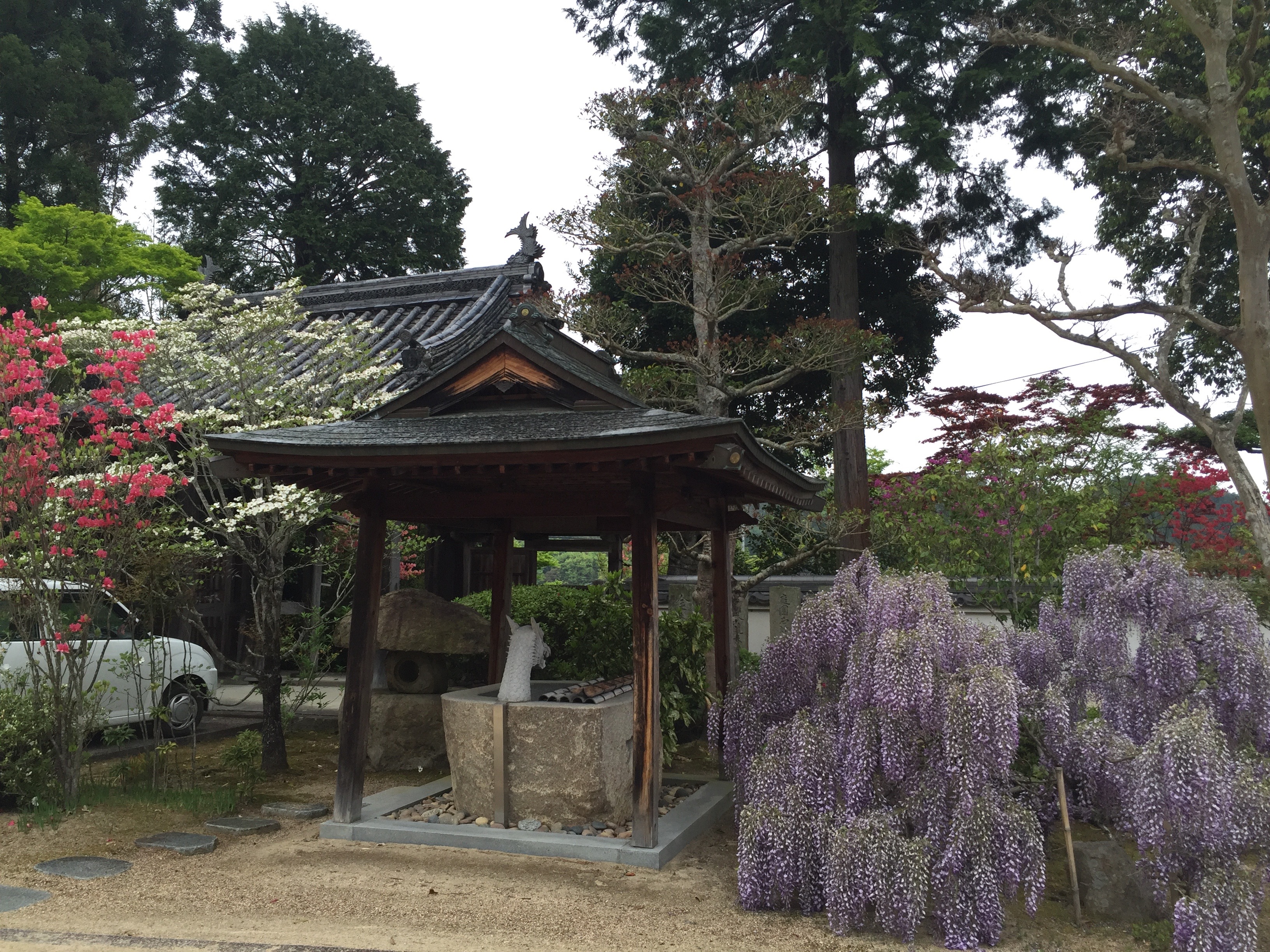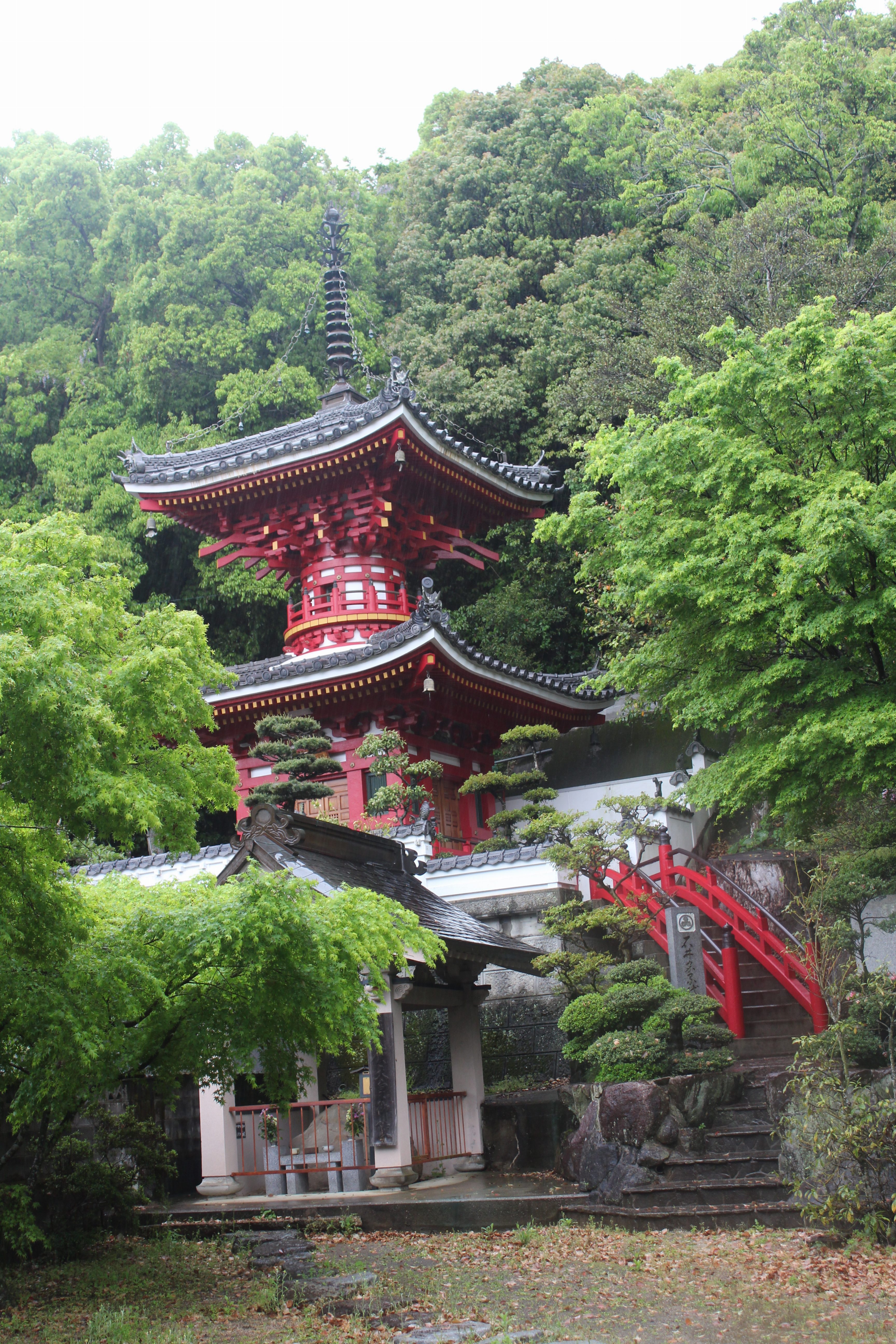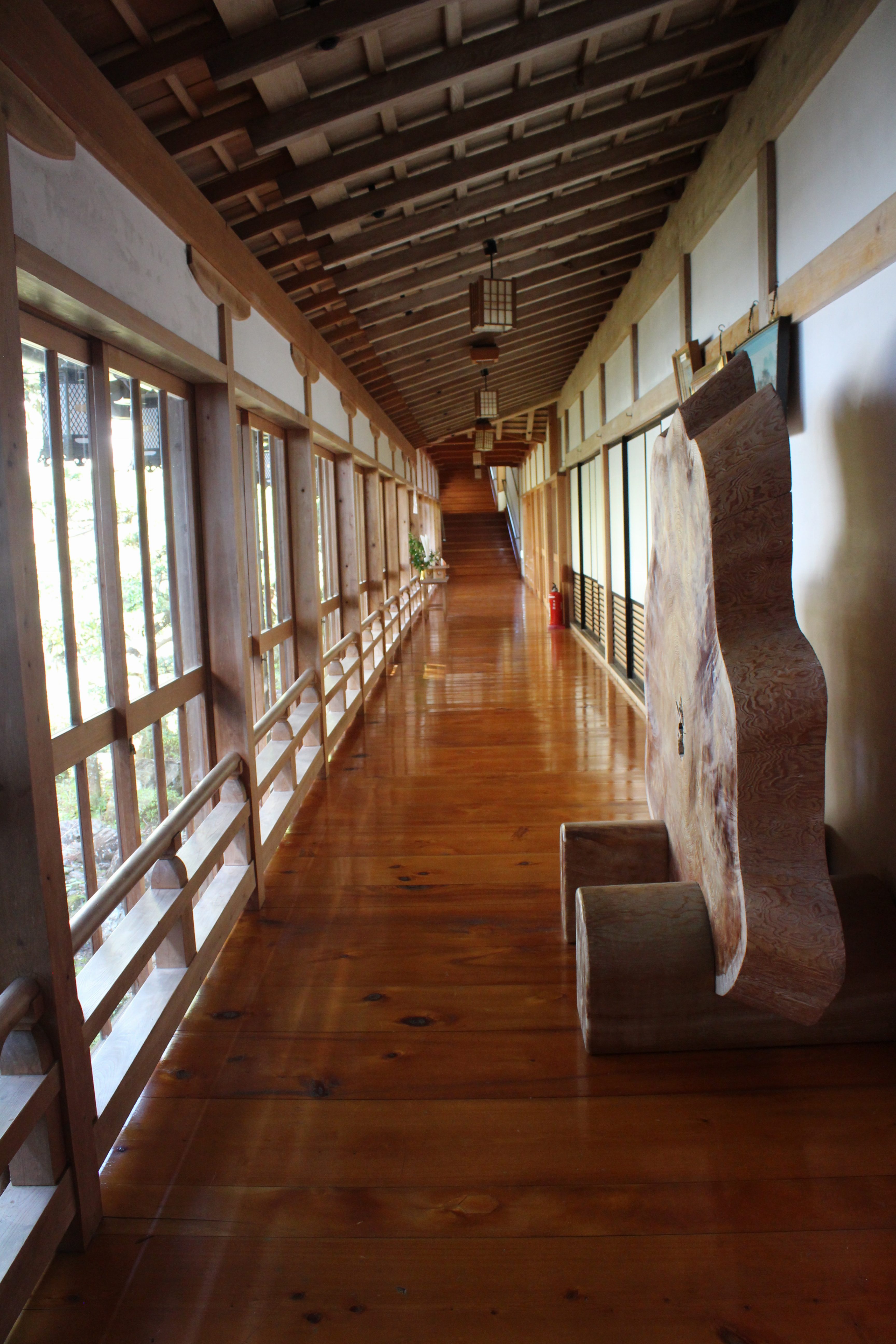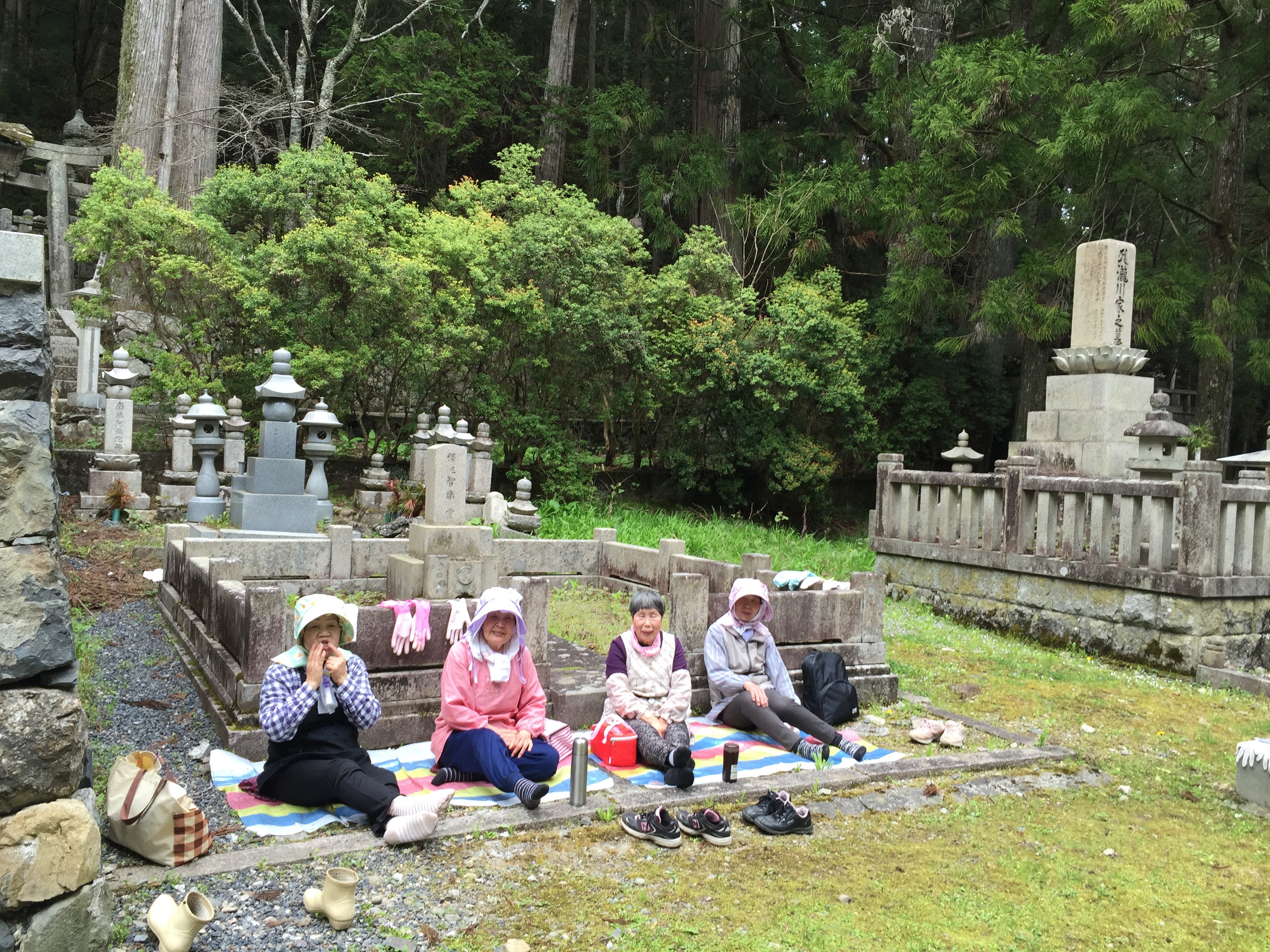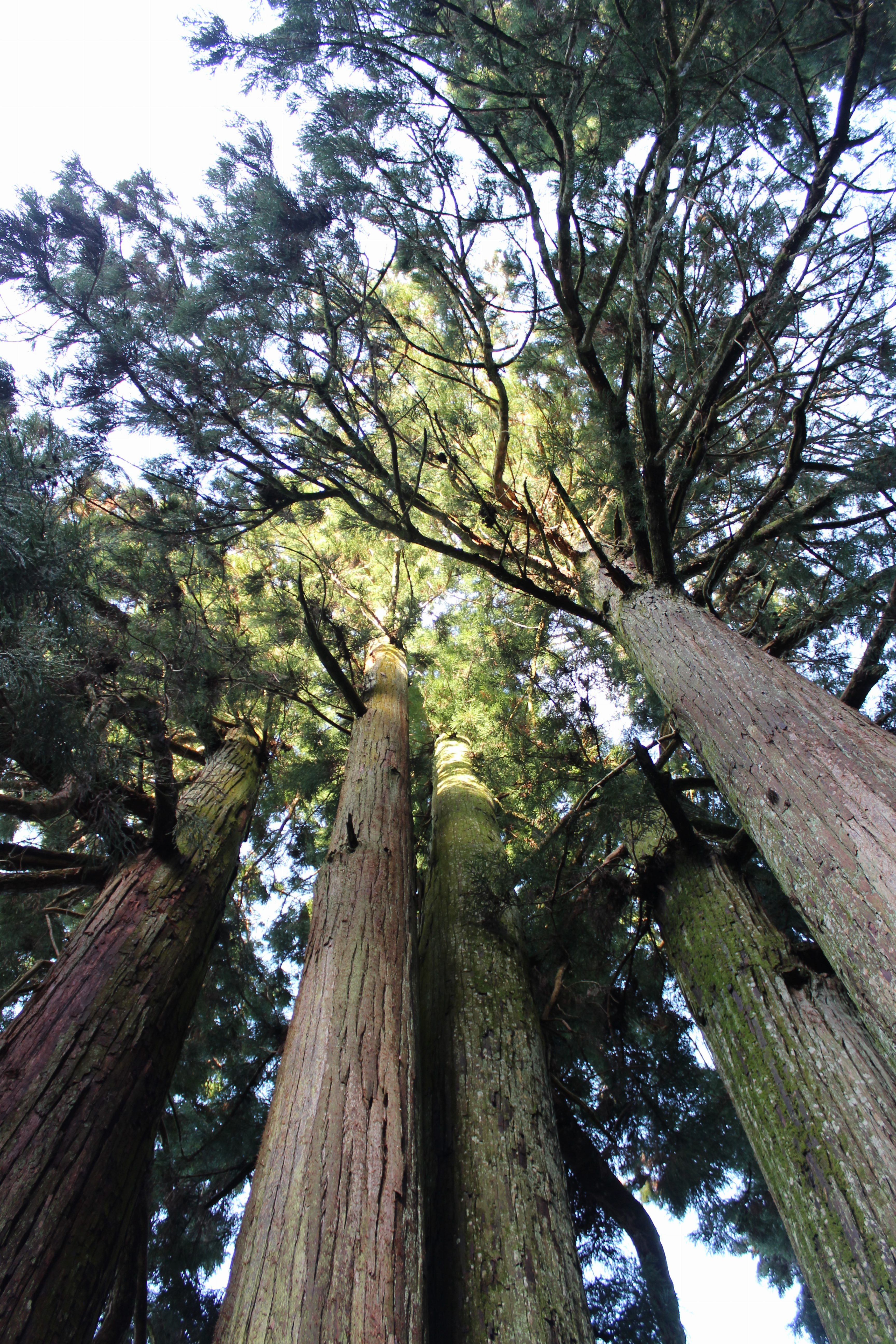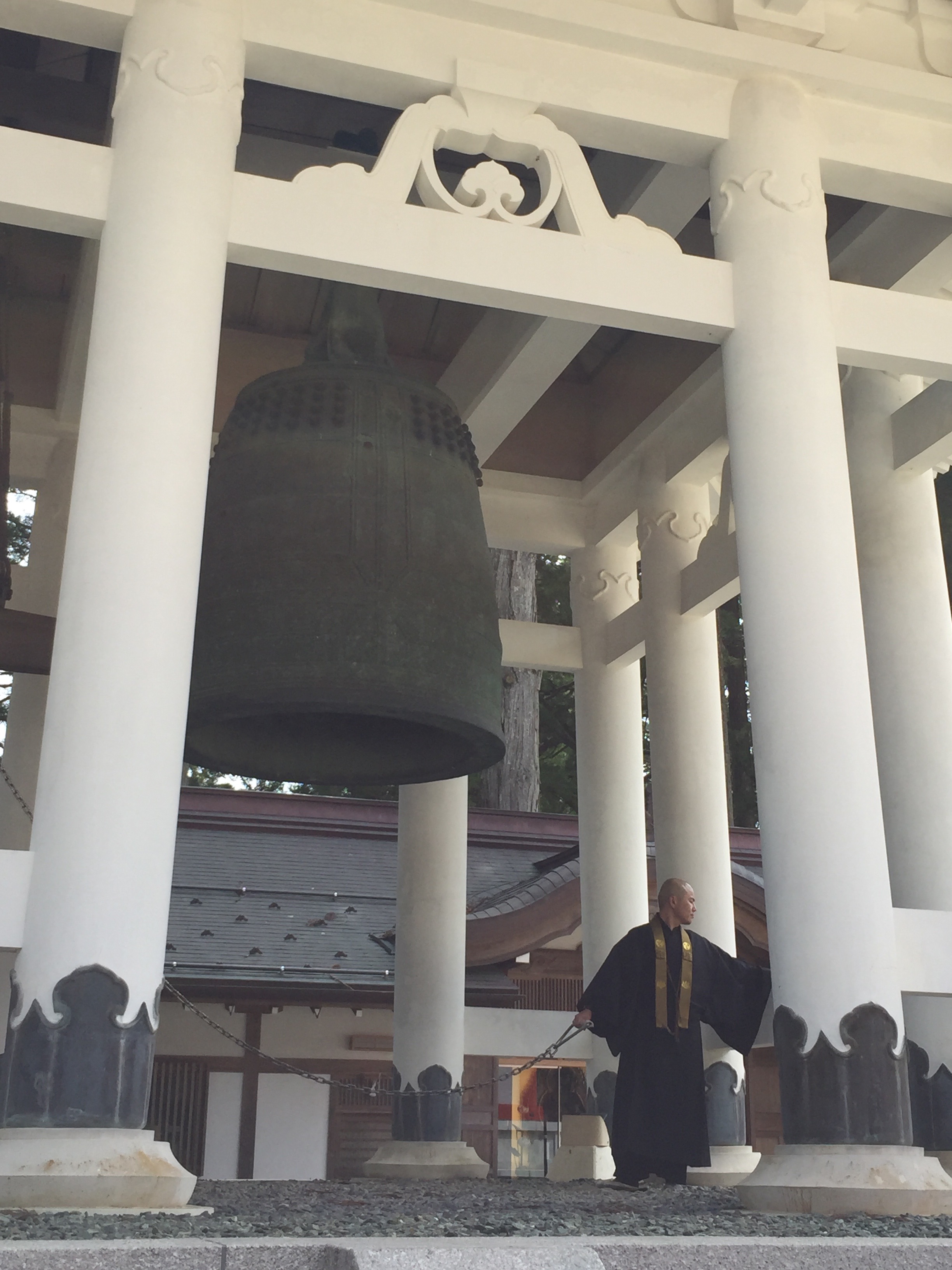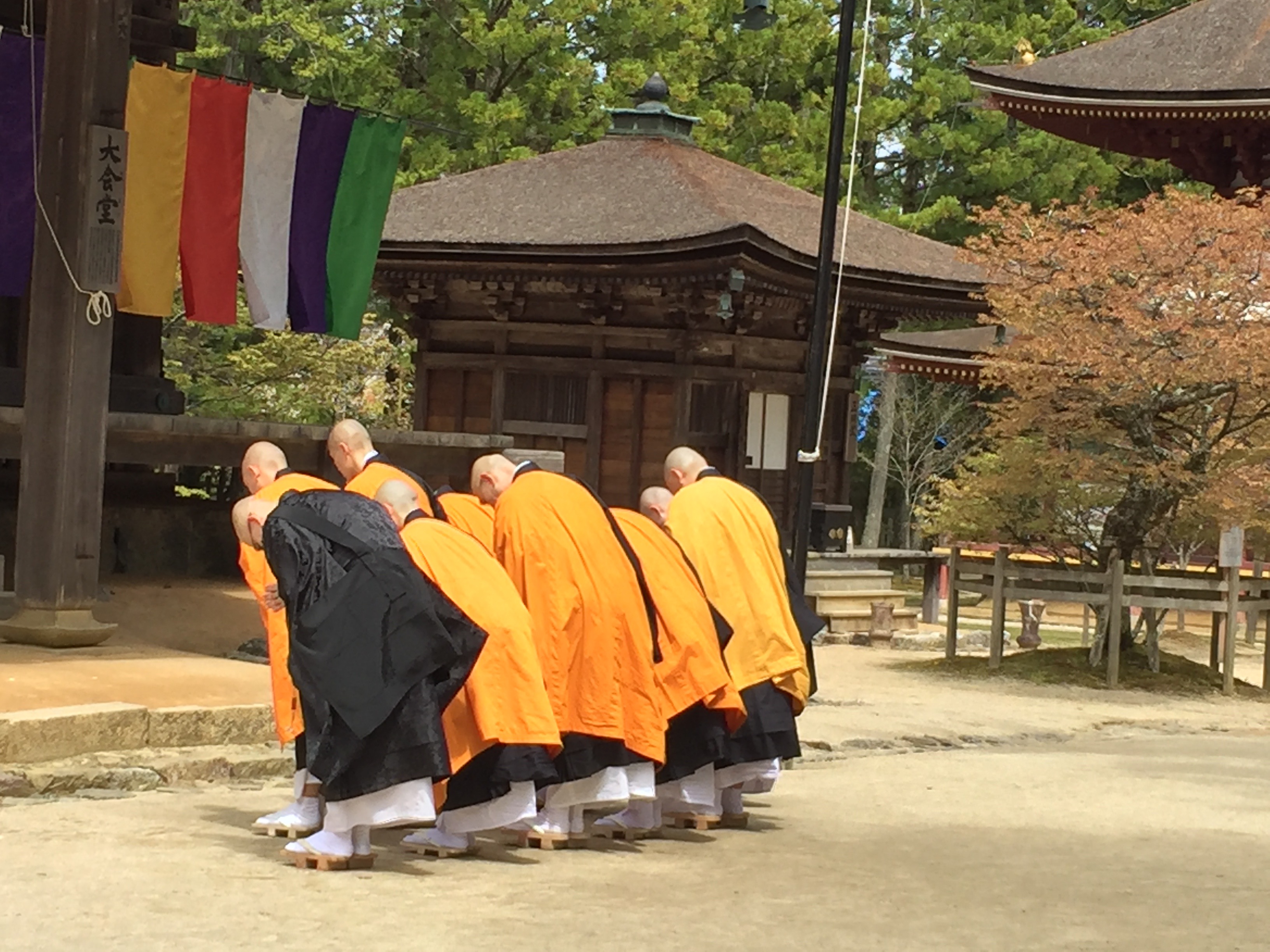Closing the Circle (temples 1,2,3 and Koyasan)
It took me two days to return to the first three temples (45km). On the second day
it was raining so hard, that I was totally wet when I arrived in Gokurakuji (temple 2).
In Gokurakuji, the temple of Pure Land, I stayed overnight.
Colorful schoolchildren walking in the rain
A temple I passed on the way
Coming back to the first three temples was a great experience. I remembered the
stress I felt in the beginning of the pilgrimage and could enjoy the atmosphere now
much more.
Pagoda of Ryōzenji
Main hall of Ryōzenji (temple 1)
Two story pagoda of Konsenji (temple 3) surrounded by lush, green trees
It was sucha contrast to the wintry scenes weeks before!
Gokurakuji has a nice garden with a Cedar tree over a thousand years old. It is said
that Kōbō Daishi planted it himself. The tree is known as “Chomeisugi, Long Life
Ceder,” and pilgrims pray for long life. In Gokurakuji, I stayed overnight in the
shukubō. To my surprise, I met Ella again. It was great!
The temple had also a rock with the footprints of Buddha.
Picture of Buddha’s footprints expressing Buddha’s life, practice and teachings as a
wanderer. The marks were most probably added gradually starting with the Dharma
wheel. The seven auspicious marks as shown here seems to start from the heel – the
dawning (awakening) over the mountains, forming the Triple Treasures, spreading
the Dharma, sharing and enjoying limitless light, life, liberation and love.
I related to the feet of Buddha very much. I thanked my own feet for their support,
for each step bringing me forward and closing the circle. I thought about Daikai-
san’s words in the Zen monastery saying, that in the Zen way, it is the body that
teaches the mind. My feet, on this 800 miles long pilgrimage, were my teachers.
After leaving Shikoku, I stayed for three nights in Koyasan. I was lucky that
Hongakuin, the temple I stayed in at the beginning of my pilgrimage, had a place
for me. In Hongakuin, I also left my staff. This was hard.
.
The entrance gate to Hongakuin
One of the corridors of Hongakuin
View from my tatami room out into the garden
Soji, a student helper, serving food
In this temple, the food is brought to your own room. It was delicious!
I spent my three days in Koyasan visiting the many temples. In the Okunoin
(cemetery), I met a nice group of Japanese women.
Okunoin with moss covered grave markers
The huge, ancient Cedar trees were most impressive.
Konpon Daitō (Original Great Pagoda)
Kōbō Daishi originally designed this pagoda, built in 816. The area where the pagoda
stands is called Danjo Garan (Temple on Platform, lit. Platformed Monastery).
Shingon priests perform many rituals and ceremonies in front of the buildings being
erected on this sacred ground.
Danjo Garan bell tower
Shingon priests reciting Sutras in front of one of the buildings of the Danjo Garan
At the end of my pilgrimage, I visited again the Okunoin (Mausoleum, lit. the Hall of
Depth) of Kūkai. I thanked him for my safe travel, for the beauty I could experience,
for the wonderful people I met and for everything that happened on the Ohenro-no-
michi (Pilgrim’s Path).
I want to also thank you for walking with me as a reader and I hope that you enjoyed
it as much as I did. In deep gassho, Garyo
We with all readers wish to express our great appreciation for Garyo’s travelogue
with intimate and intriguing pictures of her long wonderful walk and work.


